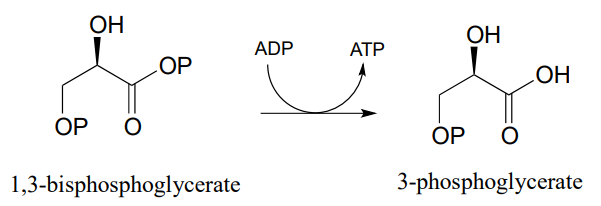9.6: Fosforilación de carboxilatos
- Page ID
- 72513
Hasta ahora hemos visto oxígenos de hidroxilo y oxígenos de fosfato actuando como grupos aceptores nucleofílicos en reacciones de transferencia de fosfato dependientes de ATP. Los oxígenos carboxilato también pueden aceptar grupos fosfato de ATP. Esto suele ocurrir de dos maneras diferentes. Primero, el carboxilato puede atacar el g-fosfato de ATP para aceptar fosfato, genera una especie conocida como 'fosfato de acilo'. Un ejemplo es la primera parte de la reacción catalizada por la glutamina sintasa (EC 6.3.1.2):

Alternativamente, los grupos carboxilato a menudo se convierten en una especie denominada “Acil-AMP”. Aquí, el oxígeno carboxilato ataca el\(\alpha \) fosfato de ATP conduciendo a la liberación de pirofosfato inorgánico. Un ejemplo es la primera parte de la reacción catalizada por la enzima asparagina sintetasa: (EC 6.3.5.4):

Dibujar un mecanismo de flecha curva para la reacción de transferencia de fosfato que se muestra a continuación (EC 2.7.2.3), que es de la vía de la glucólisis. Tenga en cuenta que el ADP está en el lado reactivo y el ATP es un producto (lo contrario de lo que hemos visto hasta ahora). Pista: ¿Qué grupo funcional es el nucleófilo? ¿Qué grupo funcional es el grupo de salida?



